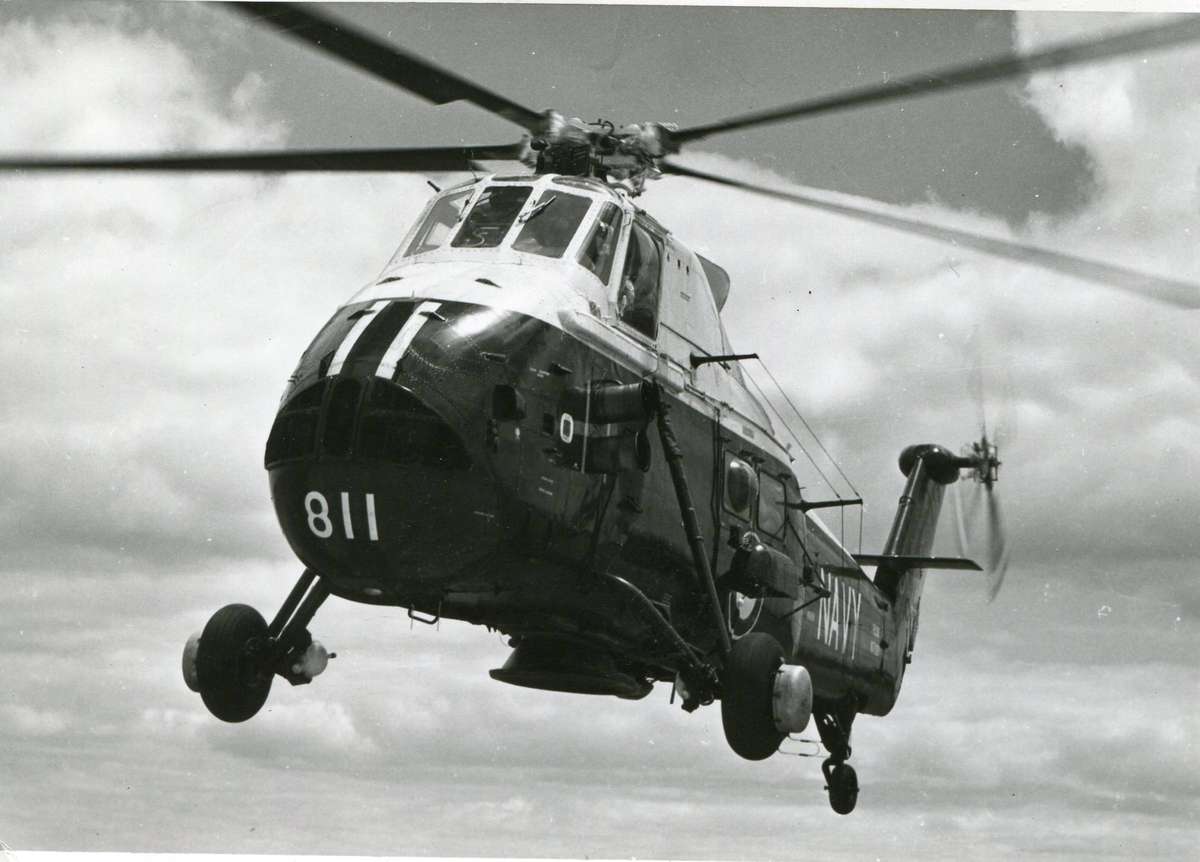Aircraft History:
- First Flight 14/08/62*
- Ditched 23/11/70 725 Squadron after engine failure during night flying dunking sortie Shoalhaven Bight. Engine failed in an ASW cable hover. Crew: LEUT(P)J.Wilkie RAN, SBLT(P) R.G Snell RAN,LT(O) C.R Linsell RN, Aircrewman LSUC J.P McCraken. Only one of two inflation bags operated and aircraft turned upside down in the water. Whilst being towed into Jervis Bay the aircraft sank.
- Crew rescued by Wessex 820, flown by Robert Waldron (the first live night helicopter rescue in the Southern Hemisphere).
* Date supplied by ADF Serials. Other reports suggest this aircraft did not arrive in Australia until 11Nov62, so first flight may have been later.
Aircraft Accident Details
Ditching in Wessex 31B No 811 by Richard Snell (copilot)
Towards the end of my Wessex training (November 1970) we were on a night training exercise in Shoalhaven Bight “pinging” for submarines. It was a dark and stormy night and for search and rescue (SAR) we were required to give an “Operations Normal” radio call every 30 minutes. If you didn’t call at the appointed time, Nowra Approach would call to check that you were OK.
At 2300 we gave our “Ops Normal” call and we started to descend to the hover from 125 ft / 90 knots. At 80 feet, the engine failed. It was as if someone had shut off the fuel. I was flying from the left seat and all I had time to do was to flare the aircraft and cushion the impact into the water.
The Wessex helicopter had floatation equipment in the wheel caps and tail cone. The wheel cap floats were designed to inflate as soon as the wheels touched salt water. In our case the floatation failed to inflate. If the floats don’t inflate, the Wessex Flight Manual states that “The aircraft will roll rapidly either left or right, adopt a nose low attitude and sink rapidly”. I can confirm that this is what happens!!
I was in the left pilot seat and the aircraft rolled left and was about 30 feet underwater before I got out!
There were 4 of us in the crew and all 4 of us got out safely.
I got water in my lungs during the exit but broke the surface thinking “Thank god I have survived!” Our ditching training and our safety equipment saved us. In our case we were each wearing life-jackets and our seat packs (each containing one man life-rafts) were connected to our lifejackets. From experience, in a ditching you will only get out with what you actually have on your person.
John Wilkie (the other pilot) and I had just tied ourselves together when the Wessex, upside-down, popped out of the water beside us then floated rapidly away. As I have said before, it was a dark and stormy night, but we were alive!
In the descent after the engine had failed John pressed the radio transmission button and yelled “Mayday, Mayday”. Luckily for us another aircraft in the area thought he heard a “Mayday” so he passed this onto Nowra Approach and they started calling up each aircraft, found that we were missing so immediately started arranging for search and rescue. We were rescued by 2 other Wessex approximately 90 minutes later. We were each winched from the water by the Wessex crews. If John Wilkie had not made the Mayday transmission we would not have been noticed as missing for at least another 30 minutes (and it was bloody cold in the water)
The Wreck of Wessex 811
As a post-script to the ditching, at first light our ditched aircraft 811 was found (floating upside-down), 25 nautical miles off Jervis Bay, by a Navy Tracker aircraft (twin-engined aeroplane). A Navy patrol boat from Jervis Bay was directed to the wreck and the OIC ‘tied’ the aircraft to the bow of the patrol boat and started slowly reversing back into Jervis Bay.
A second patrol boat (with a more senior Captain) arrived on scene shortly after and ordered the first Captain to “Cut the wreck free” (so that his boat could tow the wreck back to Jervis Bay). The first Captain initially refused the order, stating “if he cut the wreck free, it would sink!”. The second Captain then formally ordered the wreck cut free and it is now still in 80 fathoms of water 25 nautical miles off Jervis Bay.



